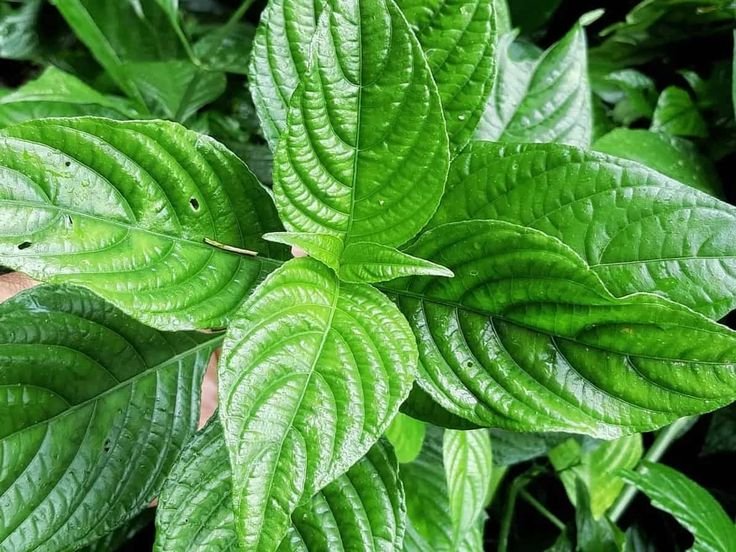Table of Contents
- What Is Justicia Wynaadensis?
- Cultural Importance in Karnataka and Kerala
- How It’s Used in Traditional Healing
- Medicinal Properties and Health Benefits
- Rituals During Aati (Aashada) Month
- Preparation Methods and Dosage
- Scientific Insights and Research
- Environmental Role and Conservation
- Where to Find It Today
- FAQs
1. What Is Justicia Wynaadensis?
Justicia Wynaadensis is a medicinal plant that grows naturally in the forests of the Western Ghats. Locally, it is known as Maddu Toppu in Kannada and Aati Toppu in Tulu. It appears briefly during the Aati/Aashada month, a time when people traditionally avoid non-vegetarian food and follow Ayurvedic detox rituals.
This plant has bright green leaves with a slightly bitter taste. It appears during the monsoon and disappears within weeks. It’s believed to have detoxifying and healing properties and is often consumed as a herbal decoction.
2. Cultural Importance in Karnataka and Kerala
Maddu Toppu is more than a herb—it’s a ritual. In Tulunadu, especially in Dakshina Kannada, Udupi, and parts of Kerala, families gather in the early Aati month to prepare a bitter herbal drink from the leaves. It’s not just about health; it’s about tradition, reconnecting with roots, and family bonding.
- Aati Amavasya: On this no-moon day, the herb is harvested before sunrise.
- Women-led Rituals: Grandmothers or elders prepare the extract early in the morning.
- One Day Only: This is a once-a-year tradition followed by generations.
3. How It’s Used in Traditional Healing
The preparation of Aati Kshaya (herbal decoction) is precise:
- Fresh leaves are crushed.
- The juice is extracted using traditional stone grinders.
- Mixed with other herbs like tulsi, black pepper, ajwain, garlic.
- Taken on an empty stomach.
Locals believe it cleanses the stomach, boosts immunity, and prevents seasonal illnesses.
4. Medicinal Properties and Health Benefits
| Benefit | Description |
|---|---|
| Detoxification | Flushes toxins from the digestive tract |
| Fever Prevention | Believed to prevent seasonal fevers during monsoon |
| Boosts Immunity | Strengthens the body against flu and colds |
| Aids Digestion | Reduces gas, bloating, and improves gut health |
| Anti-inflammatory | Helps reduce joint and muscle inflammation |
Sources: Ayurveda practitioners in Dakshina Kannada region, oral traditions, local healers
5. Rituals During Aati (Aashada) Month
During Aati Amavasya, tribal and rural communities follow a deeply symbolic process:
- The plant is plucked before sunrise without speaking a word.
- The person must take a cold water bath before plucking.
- The decoction is consumed silently.
These rituals emphasize respect for nature and healing with intention. It’s believed that if followed correctly, it protects the body for the rest of the year.
6. Preparation Methods and Dosage
There’s no standardized dosage. It’s consumed once annually:
Common Ingredients:
- Justicia Wynaadensis leaves
- Tulsi (Holy basil)
- Ajwain seeds
- Black pepper
- Garlic
Steps:
- Collect fresh leaves.
- Wash and crush them.
- Add other herbs.
- Strain and drink immediately.
Warning: Do not consume without local knowledge. Pregnant women and children should avoid unless advised.
7. Scientific Insights and Research
Limited formal research is available. However, recent studies have begun exploring the antimicrobial and anti-inflammatory properties of Justicia species. The plant’s traditional uses align with scientific principles of detox and immune modulation.
A 2018 field study in Wayanad found traces of alkaloids and flavonoids in the plant, which support its role in gut and immune health.
8. Environmental Role and Conservation
Maddu Toppu grows in undisturbed forest patches. As deforestation increases, the plant’s natural habitat shrinks. Conservation efforts are crucial.
Things to know:
- It’s a seasonal wild herb.
- Over-harvesting affects biodiversity.
- Responsible foraging is necessary.
Local NGOs are now raising awareness to protect it as a cultural and ecological treasure.
9. Where to Find It Today
You’ll mostly find Justicia Wynaadensis in:
- Western Ghats of Karnataka and Kerala
- Forest regions in Coorg, Wayanad, and Sullia
- Local ayurvedic stores during monsoon
- Weekly tribal haats (markets) in July
It’s rarely cultivated commercially due to its seasonal growth.
10. FAQs
What is the local name of Justicia Wynaadensis?
It’s called Maddu Toppu in Kannada and Aati Toppu in Tulu.
Can anyone drink the herbal juice?
It is traditionally meant for adults. Children, pregnant women, and people with chronic illness should consult a local healer.
Is it safe to consume every year?
Yes, if harvested and prepared properly during the Aati month.
Why is it only available in July?
The plant grows during the monsoon and disappears soon after. It thrives in specific humidity and soil conditions.
Is there scientific proof of its benefits?
Research is limited, but folk usage is well-documented across generations. Some studies have shown anti-inflammatory and gut-protective potential.
Can I grow it at home?
Not easily. It grows best in shaded forest conditions with natural rainfall.
External resources
- NCBI Study on Justicia Species
- Title of Article: Medicinal Plants and Their Antimicrobial Properties
- Ayurveda Medicinal Plants Database
- Title: Justicia Medicinal Plant Entry — AyurvedaM
